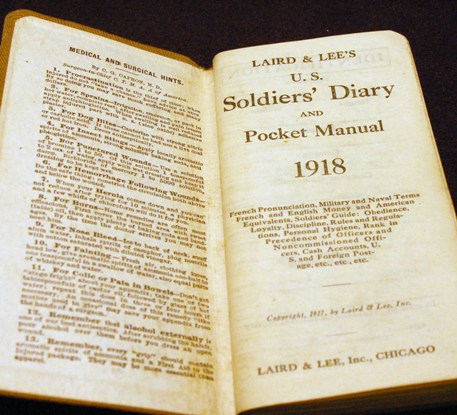|
You are viewing ARCHIVED content published online before January 20, 2025.
Please note that this content is NOT UPDATED, and links may not work. For current information,
visit https://www.nps.gov/aboutus/news/index.htm.

NPS PHOTO
Contact: Douglas C. Wilson, (360) 921-5241 VANCOUVER, WA - The Northwest Cultural Resources Institute (NCRI) at Fort Vancouver National Historic Site (National Park Service), has hired one of the region's leading historians and industrial archaeologists to develop a history of the U.S. Army's Spruce Production Division at Vancouver Barracks during the World War I period of 1917 to 1920. The project recognizes the upcoming centennial of WWI, and will provide background information that can be used to design exhibits and interpretive materials and programs at the park. The work will also help guide a future archaeological study of the Spruce Mill cut up plant. Dr. Ward Tonsfeldt, of Bend, Oregon, is conducting research at various repositories in the Pacific Northwest (including the University of Oregon, Oregon State University, the University of Washington, and the National Archives in Washington D.C.). Vancouver Barracks was the headquarters for the Spruce Production Division and the home of its largest mill. Sitka spruce harvested from the northwest from places like Olympic National Park and the Oregon Coast Range was brought by rail to an enormous cut-up mill at the site of the reconstructed Fort Vancouver and Pearson Air Museum. As reported in the Army news bulletin for the project, the Spruce Mill was a "huge war site...where thirty thousand khaki soldiers now have their headquarters...where the Government's huge sawmill devours whole forests in a single day, its saws shrieking through the thousand-year-old logs with a sinister shrillness..." The story of the Spruce Mill helps to tell the history of logging in the northwest at a crucial period of history and of change in the logging industry and technology. A new donation to the museum at Fort Vancouver National Historic Site documents the life of one of the soldiers in the Spruce Production Division, 1918-1919. Treasured objects recently donated to the museum include the induction papers for Peter Pederson and a personal diary. For more details on the Pederson donation, please see page 9 of the most recent NCRI Report Newsletter at: https://www.nps.gov/fova/parknews/upload/NCRI-Newsletter-7-1.pdf Cultural Resources staff at Fort Vancouver National Historic Site want to reach out to other families of former Spruce Production Division soldiers for stories, memories, photos, letters, and other items they might be willing to share to improve this landmark study. Families can directly contac the Northwest Cultural Resources Institute curator: Theresa Langford at (360) 816-6252 or email at e-mail us. Dr. Tonsfeldt has a unique academic and research background that is essential to accomplish this study. Since 1985, he has authored or co-authored 41 historical and archaeological reports on the lumber industry and logging railroad investigations in the Pacific Northwest. These include seven major reports that are specific to the operations of the World War I Spruce Production Division, that created the Spruce Mill at Fort Vancouver. These include studies of Spruce Production Division sites in Olympic National Park, Siuslaw National Forest, and the Vancouver National Historic Reserve. In 2003, he prepared materials to help interpret the Spruce Mill Trail between the Pearson Air Museum complex and the reconstructed Fort Vancouver. Background: Fort Vancouver National Historic Site, a unit of the National Park Service, is the heart of the Vancouver National Historic Reserve. The Vancouver National Historic Reserve brings together a national park, a premier archaeological site, the region's first military post, an international fur trade emporium, one of the oldest operating airfields, the first national historic site west of the Mississippi River, and a waterfront trail and environmental center on the banks of the Columbia River. The partners of the Reserve teach visitors about the fur trade, early military life, natural history, and pioneers in aviation, all within the context of Vancouver's role in regional and national development. The Reserve's vast array of public programs -- including living history events, festivals, cultural demonstrations, exhibits, active archaeology, and other special activities -- create a dynamic, fun, and unique tourist destination for people of all ages. |
Last updated: February 28, 2015
